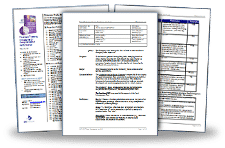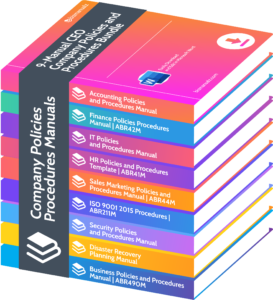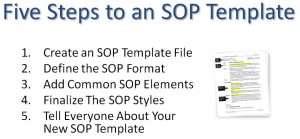Creating an Effective SOP Manual for Your Business

In today’s fast-paced business environment, having a comprehensive and well-organized Standard Operating Procedure (SOP) manual is crucial for any organization. In this article, we will discuss the importance of effective SOP manuals, the key elements of an effective SOP manual, and the steps to take to create and implement an SOP manual in your workplace.
Understanding the Importance of SOP Manuals
SOP manuals provide employees with a structured way to complete specific tasks and ensure a consistent approach to work across the organization. Additionally, SOP manuals help in identifying areas for improvement within the organization and standardizing work processes.
Defining Standard Operating Procedures (SOPs)
Standard Operating Procedures (SOPs) are step-by-step instructions that outline how to perform specific tasks within an organization. SOPs are designed to help employees understand how to perform tasks according to the organization’s standards. These standards ensure consistent quality and efficiency in the workplace.
Benefits of Implementing SOP Manuals in Your Business
The benefits of implementing SOP manuals in your business are numerous. SOP manuals help in maintaining consistency in the work, reducing errors, improving productivity, and reducing training time for new employees.
Key Elements of an Effective SOP Manual
The key elements of an effective sop manual include clear and concise writing, consistent formatting and structure, inclusive of visual aids, and regular updates and reviews. Let’s investigate each of the effective SOP manual key elements.
Clear and Concise Writing
The writing of an SOP manual should be clear and concise. The language used should be easy to understand, free of jargon, and specific to the task at hand. This means that the manual should be written in a way that is accessible to all employees, regardless of their level of experience or education.
One way to ensure that the writing is clear and concise is to use active voice throughout the manual. This helps to make the manual more engaging and easy to follow, as it gives the impression that the instructions are being given directly to the reader.
Another important aspect of clear and concise writing is to avoid using overly technical language. While it may be tempting to use industry-specific jargon, this can be confusing to employees who are not familiar with the terminology. Instead, use plain language that is easy to understand.
Consistent Formatting and Structure
Consistent formatting and structure of an SOP manual is essential for easy navigation and comprehension. Using headings and sub-headings for the different sections of the SOP manual ensures a logical structure that is easy to follow.
Additionally, using bullet points and numbering for step-by-step instructions in the manual helps improve clarity and readability. This makes it easier for employees to follow the instructions and complete the tasks at hand.
It is also important to ensure that the formatting and structure of the manual is consistent throughout. This means using the same font, font size, and spacing throughout the document.
Inclusion of Visual Aids
Including visual aids such as diagrams, flow charts, process maps, and images helps improve the understanding of the SOP manual. Using visual aids improves the clarity of instructions and can help employees remember the information more easily.
Visual aids can be particularly useful for complex or technical tasks, as they can break down the information into smaller, more manageable chunks. This can help to reduce the risk of errors and improve overall efficiency.
When using visual aids, it is important to ensure that they are clear and easy to understand. This means using high-quality images and diagrams, and labeling them clearly so that employees know exactly what they are looking at.
Regular Updates and Reviews
An effective SOP manual should be reviewed and updated regularly to ensure it remains relevant and up-to-date. Regular updates help ensure that the manual reflects any changes in policies, procedures, or industry standards.
Reviewing the SOP manual should be an ongoing process to ensure its effectiveness, and employees should be encouraged to provide feedback for improving the manual. This can help to identify areas that may be unclear or confusing, and ensure that the manual is as effective as possible.
It is also important to ensure that the manual is accessible to all employees, regardless of their level of experience or education. This means providing training and support to help employees understand the manual and how to use it effectively.
Overall, an effective SOP manual is an essential tool for ensuring that tasks are completed efficiently and accurately. By following these key elements, organizations can create a manual that is clear, concise, and easy to use.
Steps to Create Your SOP Manual
Creating an SOP manual is an essential step in ensuring that your organization runs smoothly and efficiently.
Identifying Core Business Processes
The first step in creating an SOP manual is to identify the core business processes that are fundamental to your organization. These core processes may include customer service, production, marketing, finance, and many others.
Identifying these processes is critical to ensure that all employees understand their roles and responsibilities and how they fit into the overall business structure. This step also helps to identify any areas where processes may be duplicated or overlap, leading to inefficiencies and delays.
Documenting Each Process Step-by-Step
Once you have identified the core business processes, the next step is to document each process step-by-step. This documentation should outline the standard operating procedures for each process, including the desired outcomes, steps involved, expected results, and any precautions, warnings, or tips necessary to complete the process effectively.
Documenting each process in detail is crucial to ensure that all employees have a clear understanding of what is expected of them. It also helps to identify any potential areas where processes may be improved or streamlined to increase efficiency and productivity.
Assigning Roles and Responsibilities
Assigning roles and responsibilities is a crucial step in creating an effective SOP manual. Each employee involved in a specific process should have clear roles and responsibilities outlined in the SOP manual. This helps to avoid confusion, delays, or duplication of work.
Assigning roles and responsibilities also helps to ensure that each employee understands their role in the overall business structure and how they contribute to the success of the organization. This step is particularly important in larger organizations where employees may be working on multiple projects simultaneously.
Establishing Approval and Review Procedures
Establishing approval and review procedures is essential to ensure the SOP manual remains up-to-date and relevant. Depending on the structure and size of the organization, a review process should be established, outlining the frequency and mechanisms for updates, approvals, and reviews of the SOP manual.
Regularly reviewing and updating the SOP manual is critical to ensure that it remains relevant and effective. This step also helps to identify any areas where processes may have changed or evolved, requiring updates to the SOP manual to reflect these changes.
Creating an SOP manual is an essential step in ensuring that your organization runs smoothly and efficiently. By identifying core business processes, documenting each process step-by-step, assigning roles and responsibilities, and establishing approval and review procedures, you can create an effective SOP manual that will help your organization achieve its goals and objectives.
Implementing Your SOP Manual in the Workplace
Implementing a Standard Operating Procedure (SOP) manual in the workplace is a crucial step towards ensuring that your organization is efficient, productive, and compliant with industry regulations. SOPs provide a standard framework for employees to follow, ensuring consistency in quality and reducing the risk of errors and accidents.
Training Employees on SOPs
Effective training of employees on SOPs is essential to ensure they understand the processes outlined in the manual. The training sessions should be conducted regularly, and the employees should be encouraged to ask questions and clarify doubts. The training should include an overview of the processes, the roles and responsibilities of employees, step-by-step procedures, and best practices for completing tasks.
It is also essential to ensure that the training is tailored to different levels of employees. For example, the training for a new employee should be more detailed than that for an experienced employee who has been working in the organization for a while. The training should also be updated regularly to reflect any changes in the SOP manual.
Monitoring Compliance and Addressing Non-Compliance
Monitoring compliance with the SOP manual is necessary to ensure that employees are following the procedures documented in the manual. This can be done through regular audits, inspections, and observations. The results of the monitoring should be documented, and any non-compliance should be addressed swiftly.
It is essential to understand that non-compliance can occur due to various reasons, such as lack of understanding, inadequate training, or non-compliance due to personal reasons. Therefore, it is crucial to investigate the root cause of non-compliance and take corrective actions to ensure that employees understand the importance of following the procedures documented in the manual.
Encouraging Feedback and Continuous Improvement
Encouraging feedback and continuous improvement on the SOP manual is essential to ensure that it remains effective and relevant. Employees should be encouraged to provide feedback and suggest modifications to improve the manual’s clarity and relevance regularly.
It is also essential to review the SOP manual periodically to ensure that it is up-to-date with the latest industry regulations and best practices. The review process should involve all stakeholders, including employees, supervisors, and management.
In conclusion, implementing an SOP manual in the workplace is a vital step towards ensuring that your organization is efficient, productive, and compliant with industry regulations. Effective training, monitoring compliance, and encouraging feedback and continuous improvement are essential components of a successful SOP implementation.
Effective SOP Manual for Your Business
Creating an effective SOP manual is essential for any organization seeking to improve efficiency, reduce errors, and maintain consistency. SOP manuals are a critical tool for ensuring consistency in the workplace and standardizing work processes. By following the steps outlined in this article, any organization can create an effective SOP manual and implement it in the workplace for better results.
















This is a good incentivization for organisation managers and employees for having thereof an enabling working environment.